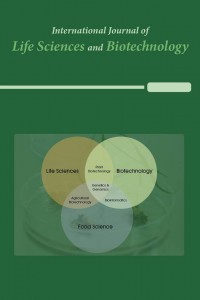Isolation of Antibiotic Resistant Bacteria from Rivers in Kelantan, Malaysia
Isolation of Antibiotic Resistant Bacteria from Rivers in Kelantan, Malaysia
___
- 1. Jiang, L., et al., Prevalence of antibiotic resistance genes and their relationship with antibiotics in the Huangpu River and the drinking water sources, Shanghai, China. Science of the Total Environment. 2013. 458: p. 267–272.
- 2. Martinez, J.L., Environmental pollution by antibiotics and by antibiotic resistance determinants. Environmental Pollution, 2009. 157: p. 2893–2902.
- 3. Al-Badaii, F., and M.S. Othman, Water Pollution and its Impact on the Prevalence of Antibiotic-Resistant E. coli and Total Coliform Bacteria: A Study of the Semenyih River, Peninsular Malaysia. Water Qual Expo Health, 2015. 7: p. 319–330.
- 4. Barile, M.F., Gram staining technique. Methods in Mycoplasmology V1: Mycoplasma Characterization, 2012. 1: p. 39.
- 5. Hudzicki, J., Kirby-Bauer disk diffusion susceptibility test protocol. American Society for Microbiology, 2009. 2016: p. 1-23.
- 6. Clinical and Laboratory Standards Institute, CLSI, M100-S25. Performance Standards for Antimicrobial Susceptibility Testing; Twenty-Fifth Informational Supplement. Wayne, PA: Clinical and Laboratory Standards Institute, 2015.
- 7. Bhuvaneshwari, G., Multiple Antibiotic Resistance Indexing of Non-Fermenting Gram-Negative Bacilli. Asian Journal of Pharmaceutical and Clinical Research, 2017. 10 (6): p. 78-80.
- 8. Holt, J. G., S. T. Williams, and Holt, Bergey's Manual of Systematic Bacteriology, Vol. 4: Lippincott Williams & Wilkins, 1989.
- 9. Vos, P., et al., Bergey's Manual of Systematic Bacteriology: Volume 3: The Firmicutes (Vol. 3): Springer Science & Business Media, 2011.
- 10. Ahmad, A. K., I. Mushrifah, and M.S. Othman, Water Quality and Heavy Metal Concentrations in Sediment of Sungai Kelantan, Kelantan, Malaysia: A Baseline Study. Sains Malaysiana, 2009. 38(4): p. 435–442.
- 11. Akmaliah Razak Potensi komersial Sungai Lebir. Kumpulan Media Karangkraf. Retrieved November 7, 2018, from https://www.karangkraf.com/berita/potensi-komersial-sungai-lebir-1.639980 (2017, 9 March).
- Yayın Aralığı: Yılda 3 Sayı
- Başlangıç: 2018
- Yayıncı: International Society of Academicians
Isolation of Antibiotic Resistant Bacteria from Rivers in Kelantan, Malaysia
Nurul Liyana HASSAN, Kam KAR YERN, Nor Azimah MOHD ZAİN
Kendiliğinden Montajlı Peptidler ve Kullanım Alanları
Biberlerde Türler Arası Melezleme
Polymorphism of Alpha S1-Casein Gene in Yankasa Sheep Breed of Mubi, Adamawa State of Nigeria
İsmaila Yada SUDİ, Shuaibu MOHAMMED, Malachi TİZHE, Clément AUGUSTİNE
Isolation of Antibiotic Resistant Bacteria from Rivers in Terengganu, Malaysia
Nurul Aqidah SALİKAN, Nor Azimah MOHD ZAİN, Kam KAR YERN
Olcay GENÇYILMAZ, Gamze SEÇKİN
Mümine GURUK, Mehmet KARAASLAN
Yusuf JACOB AKURE, Maryam AHMED, Hyelni BUKAR, Gingsami SİMON
Gisela 6 ve SL 64 Anaçlarının İn vitro Koşullarda Çoğalma Performanslarının Belirlenmesi
